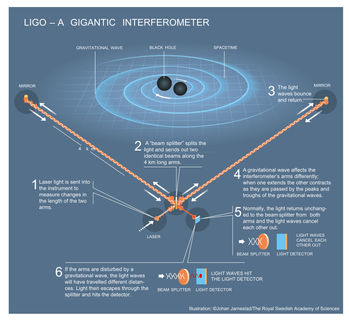Are you certain, Mr. Heisenberg?
Measurements at the Vienna University of Technology deepen our understanding of quantum uncertainty
Heisenberg's Uncertainty principle is arguably one of the most famous foundations of quantum physics. It says that not all properties of a quantum particle can be measured with unlimited accuracy. Until now, this has often been justified by the notion that every measurement necessarily has to disturb the quantum particle, which distorts the results of any further measurements. This, however, turns out to be an oversimplification. In neutron experiments carried out by professor Yuji Hasegawa and his team at Vienna University of Technology, different sources of quantum uncertainty can now be distinguished, validating theoretical results by collaborators from Japan. The influence of the measurement on the quantum system is not always the reason for uncertainty. Heisenberg's arguments for the uncertainty principle have to be revisited – the uncertainty principle itself however remains valid. The results have now been published in the journal Nature Physics.
Position or Momentum – But Never Both
It is well established that some physical quantities cannot be measured at the same time. The question is, how this fact should be interpreted. "Heisenberg's famous thought experiment about using light light (?-rays) to measure the position of an electron is still quoted today", says Jacqueline Erhart from the Institute for Atomic and Subatomic Physics at the Vienna University of Technology. To measure the position of a particle with high precision, light with a very short wavelength (and therefore high energy) has to be used. This results in momentum being transferred to the particle – the particle is kicked by the light. Therefore, Heisenberg argued, it is impossible to measure both position and momentum accurately. The same is true for other pairs of physical quantities. Heisenberg believed that in these cases, an error in one measurement leads to an inevitable disturbance of the other measurement. The product of error and disturbance, Heisenberg claimed, cannot be smaller than an a certain threshold.
Nature is Uncertain – Even Without Measurements
However, the effect of the measurement on the quantum system and the resulting disturbance of the second measurement is not the core of the problem. "Such disturbances are also present in classical physics – they are not necessarily linked to quantum physics", Stephan Sponar (Vienna UT) explains. The uncertainty is rooted in the quantum nature of the particle. Quantum particles cannot be described like a point-like object with a well-defined velocity. Instead, quantum particles behave as a wave – and for a wave, position and momentum cannot be defined accurately at the same time. One could say that the particle itself does not even "know" where exactly it is and how fast it travels – regardless of the particle being measured or not.
A Generalized Uncertainty Relation – Taking the Measurement Into Account
"In order to describe the fundamental uncertainty and the additional disturbance due to the measuring process, both particle and measurement device have to be treated in the framework of quantum theory", says Georg Sulyok (Vienna UT). This was done by the Japanese physicist professor Masanao Ozawa in 2003, leading to a generalized uncertainty principle. His equations contain different "kinds of uncertainty": On the one hand the uncertainty which comes from the measurement, as it disturbs the particle (this is the uncertainty described in Heisenberg's thought experiment of the position-momentum-measurement), on the other hand the equations contain the fundamental quantum uncertainty, which is present in any quantum system, regardless of the measurement.
Neutrons and their Spin
A sophisticated experimental design now made it possible to study these contribution to uncertainty at the Vienna University of Technology. Instead of a particle's position and momentum, the spin of neutrons was measured. The spin in x-direction and the spin in y-direction cannot be measured simultaneously, they fulfill the uncertainty relation, in much the same way as position and momentum. With magnetic fields, the neutron spins were rotated into the right direction, then the spins were measured in two consecutive experiments. Carrying out a large number of measurements with small, well-defined changes in the measurement apparatus, the physicists could study the interplay between different sources of uncertainty.
Arbitrarily Small Disturbance
"The smaller the error in one measurement, the larger the disturbance of the other – this rule still holds. But the product of error and disturbance can be made arbitrarily small – even smaller than Heisenberg's original formulation of the uncertainty principle would allow", says professor Yuji Hasegawa.
But even if two measurements hardly influence each other: quantum physics remains "uncertain". "The uncertainty principle is of course still true", the researchers confirm. "But the uncertainty does not always come from the disturbing influence of the measurement, but from the quantum nature of the particle itself."

























































